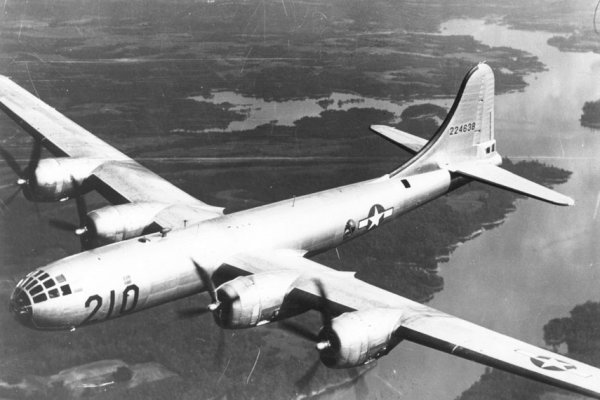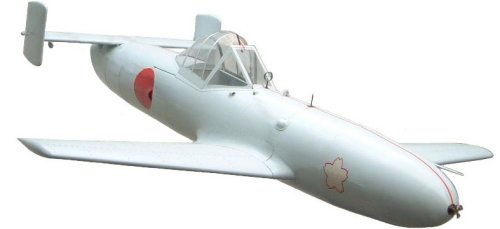ACUFO-1945-05-17-NAGOYA-2
In the report of the XXIst Bomber Command Tactical Mission No. 176, flown by the B-29's bombers of the 58th, 73rd, 313th and 134th Bombardment Wings on May 16-17, 1945, the target being the Mitsubishi Aircraft Works at the South of the Nagoya Urban Area, Japan, there was a section about encounters of "balls of fire" by the airmen, as opposed to enemy planes, flak and other mundane observations.
Among these observations of "Unusual Types" and "balls of fire", we find that...
... A ball of fire was first observed by a crew 20 miles off the coast on the return route. It followed the B-29 at 4 - 6 o'clock low and 1200 to 1600 yards behind for 15 minutes. The B-29 was able to pull away from the ball of fire by an indicated air speed of 260 miles per hour.
| Date: | May 17, 1945 |
|---|---|
| Time: | ? |
| Duration: | 15 minutes. |
| First known report date: | May 17, 1945 |
| Reporting delay: | Hours. |
| Country: | Japan |
|---|---|
| State/Department: | Aichi |
| City or place: | Nagoya |
| Number of alleged witnesses: | 2 or more. |
|---|---|
| Number of known witnesses: | ? |
| Number of named witnesses: | 0 |
| Reporting channel: | Military operations report. |
|---|---|
| Visibility conditions: | Night. |
| UFO observed: | Yes. |
| UFO arrival observed: | ? |
| UFO departure observed: | Yes. |
| UFO action: | Follows. |
| Witnesses action: | Accelerates to 260 mph. |
| Photographs: | No. |
| Sketch(s) by witness(es): | No. |
| Sketch(es) approved by witness(es): | No. |
| Witness(es) feelings: | ? |
| Witnesses interpretation: | ? |
| Sensors: |
[X] Visual: 2 or more.
[ ] Airborne radar: [ ] Directional ground radar: [ ] Height finder ground radar: [ ] Photo: [ ] Film/video: [ ] EM Effects: [ ] Failures: [ ] Damages: |
|---|---|
| Hynek: | NL |
| Armed / unarmed: | Armed, 12 Browning M2 12.7 mm machine guns. |
| Reliability 1-3: | 3 |
| Strangeness 1-3: | 1 |
| ACUFO: | Moderate strangeness, possible Japanese plane. |
[Ref. aaf1:] U.S. ARMY AIR FORCES:
This report was of the 21st Bomber Command Tactical Mission No. 176, flown 16-17 May 1945, the target being the Mitsubishi Aircraft Works at the South of the Nagoya Urban Area, Japan.
The units involved were the 58th, 73rd, 313th and 134th Bombardment Wings. The initial point (IP) was at Biwa Lake, landfall was at O Shine.
The report below appeared in the "Enemy Air Opposition" part of the report. This part included information about the enemy aircraft encountered during the mission and what these did.
But in this "Enemy Air Opposition" part, there was also a section titled "Observations of Unusual Types", followed by a section "Balls of fire", in which several observation of what was though to be other things than planes, rockets, flares and flak, appeared. It included:

|
[... other "balls of fire"...]
c. A ball of fire was first observed by a crew 20 miles off the coast on the return route. It followed the B-29 at 4 - 6 o'clock low and 1200 to 1600 yards behind for 15 minutes. The B-29 was able to pull away from the ball of fire by an indicated air speed of 260 miles per hour.
[... other "balls of fire"...]
The Boeing B-29 "Superfortress" was the heaviest bomber of the U.S. Army Air Forces, used in operations from May 8, 1944 and on. Its maximum speed was 574 km/h.
Its defensive armament was 12 Browning M2 12.7 mm machine guns.

|

|
In the 2000s, ufological sources recorded numerous observations, neither more nor less strange, coming from reports of bombing missions on Japan by the XXIst Bomber Command; but this one does not seem to have been found.
It is obviously not entirely possible to completely exclude that it was an enemy plane. But the sighting was not considered as such in the report, being noted in a section regarding "balls of fire" instead of the section regarding enemy aircraft.
Sometimes, crews thought they encountered “Baka” rocket planes, and they sometimes did; in this case description does not fit. The Baka rocket exhaust was always described with terms such as "3 feet wide and 15 feet long", and always at the rear of the Baka.
“Baka” (photo below) was the allied code name for the Yokosuka MXY-7 "Ohka", a rocket-powered human-piloted kamikaze attack aircraft used by the Japanese air forces against Allied ships towards the end of the Pacific War during World War II. It was extremely fast, but with a very short range, so that it had to be carried into action as a parasite aircraft by a much larger bomber.

|
The “Baka” had a cruising speed of 840 km/h and a maximum speed of 1,040 km/h; so it could have approached the B-29 very quickly, and it did not.
Its range was only 36 km, but as it was dropped from a "Betty" carrier plane, this is not a problem.
What is a problem is that a “Baka” could not have stayed 1200 to 1600 yards behind the B-29 for 15 minutes.
This observation shows several typical characteristics of what has been called the "Foo-Fighters": the following maneuvers of the plane despite the escape maneuvers of the plane, and the absence of attack by the ball of fire.
In the present case, we can of course exclude a rocket, an air-air bomb, a balloon, a meteor, a searchlight, a flare, etc. The only "ordinary" explanation which would be "the least worst" remains that of an enemy plane.
It is known from a number of other mission reports that the Japanese pilots sometimes used searchlights or their landing lights to "search" for the B-29's.
Moderate strangeness, possible Japanese plane.
* = Source is available to me.
? = Source I am told about but could not get so far. Help needed.
| Main author: | Patrick Gross |
|---|---|
| Contributors: | None |
| Reviewers: | None |
| Editor: | Patrick Gross |
| Version: | Create/changed by: | Date: | Description: |
|---|---|---|---|
| 0.1 | Patrick Gross | December 20, 2023 | Creation, [aaf1]. |
| 1.0 | Patrick Gross | December 20, 2023 | First published. |